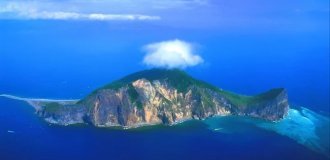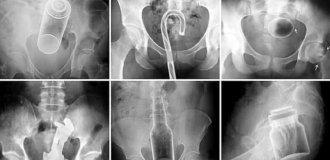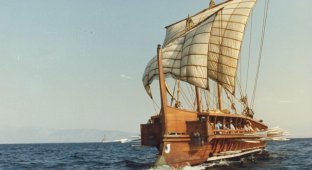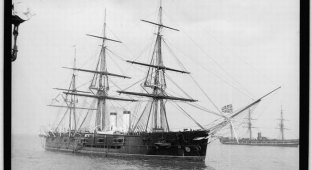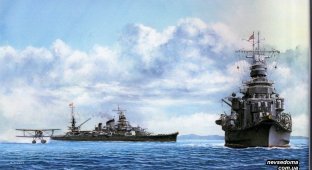Warships and merchant ships of Ancient Rome (17 photos + 1 video)
Rome had a powerful battle fleet, the Classis Romana, ruled by ancient duumvir admirals and later prefects. The crews of their ships consisted of dashing sailors under the command of a gallant captain-trierarch and tough manipular marines, not inferior to legionnaires, under the command of a centurion (boarding captain). There were also gigantic merchant ships.

The Roman fleet has been known since the 5th century. BC, then they were small boats, somehow making their way through the waves and similar to the “Argo” “familiar” to us. But everything changed dramatically during the wars with Carthage - a powerful fleet was needed to gain superiority at sea, and then to invade. Not immediately, but the Romans unraveled the secrets of Carthage's shipbuilding, because they sawed the wrong wood at the wrong time, stabbed the boards in the wrong way, put iron nails in sea water and made the classic mistakes of land powers. But! Still, Greek engineers, like the Czechs who worked for the Nazis and these for the Romans, always helped, and the Roman engineers were not idiots. And so, when an entire Carthaginian ship washed ashore, they looked at it and were silently delighted: the ship was manufactured using the in-line method, and the parts were numbered. Having quickly disassembled it, they sharpened the parts, took down the drawings and quickly built the same thing, without even finishing it with a file. Rome was strong in stream production - soon a ship was produced from factory blanks in 40-60 days, or even faster. Of course, they experimented with drying wood and construction, but the Carthaginians strangled themselves - soon Rome had a fleet, but it’s not worth mentioning how it ended for Carthage.

In terms of tactics, the fleet corresponded to the legions: we get closer, bombard us with everything that can be thrown, or better yet, burn, we ram and finish off the enemy, who is stunned by the abundance of combat vehicles, with a gladiator in the belly. Before the battle, the mast was removed and stowed, and the sails were put into covers. They constantly piled several ships on top of one, creating a local advantage. The Carthaginians immediately did not like the invention of the “crow” (lat. corvus) performed by the Romans: a sort of fire escape on the forecastle, with a beak-shaped sinker designed to be fixed in an enemy ship, and if lucky, to pierce the hull. The manipularists climbed up this ladder to cut the other side. The Raven, of course, and all sorts of combat vehicles weakened seaworthiness, but its modifications remained in service. There was also a dolphin - a kind of demolition ball in the shape of a dolphin made of lead or something heavy - they were swinging over the deck, knocking over anything. Also, the cunning Romans used something like a battering ram, which was used to demolish gates - they hit the enemy and the ship with it. In fact, they also had a real bronze ram (tank or bow), which could weigh half a ton, and was guaranteed to penetrate the hull of the ship. But the experienced trierarchs did something more cunning: the blow went casually, then the ram broke the oars, and with them the rowers, demolishing half the ship. The ram was rarely sharpened so as not to get stuck, it was usually blunt, they say it increased storm resistance, but in the steam fleet, the ram, on the contrary, interfered with seaworthiness. Well, after they had showered the enemy with arrows and harpoons-harpaxes made of scorpions (mounted crossbows, later polyballs) and stones from onagers (Latin tormenta - artillery), the Romans poured buckets of burning liquids on the enemy’s head or poured them from hand flamethrowers - siphons. And if there were still any survivors there: ramming and other joys, and then boarding. In general, we had as much fun as we could.


Their ships are classified depending on the number of rows of oars.
Ships with one row of oars (vertically) were called moneris or unirems, and in modern literature they are often referred to simply as galleys,
with two - biremes or liburns,
with three - triremes or triremes,
with four - tetrares or quadriremes,
with five - penteres or quinqueremes,
with six - hexers.
Stories about an even larger, almost 16-row design can be attributed to fiction or particularly skillful single samples. According to the reconstruction of the Greek trireme "Olympia" (1985-87), the speed of such vessels was up to 9.5 knots at oars (usually they say no more than 7 knots, but the fact of sea trials is obvious). Ivliya, a Soviet reconstruction of the ancient Greek diera (bireme) in 1989, showed similar results. We sailed only with a fair wind, the main move was by oars. There was practically no seaworthiness; often a storm destroyed them in entire fleets. The ships served for up to 30 years.

Unirema
The simplest, little different from the Greek unirema, had 12 pairs of oars, two oarsmen for each. Displacement no more than 50 tons (normal torpedo boat). The main weapon was a ram (roster), and it needed a good move, so a second and third row of oars appeared. We can roughly say patrol boats.

Birema or diera, liburni
Already more serious vessels with a two-tier arrangement of oars. Length 30-38 m, displacement from 60 to 100 tons. Almost the main type of ships, they were used in many ways, conditionally patrol boats. They had a ram and even sometimes a battle tower, there could be up to 80 rowers, up to 50 marines. Liburns (subtype) could have one row of oars, but with a closed deck to make them more seaworthy. These ships spread rot to pirate uniremes and sometimes even risked engaging with triremes and larger ships, sometimes successfully. They could transport infantry, 20 of these ships could easily take a cohort (360-600 steel-clad professionals) and land them wherever Rome wanted to bring its own prosperity and slavery.

Triremes
Displacement 80 - 100 tons (normal minesweeper), length 30-40 meters, width 4-6 meters. A typical trireme had a crew of 150 oarsmen, 12 sailors, approximately 80 marines and several officers. Transport capacity was, if necessary, 200-250 legionnaires. It was already armed with throwing machines and could be considered a corvette or light cruiser, constantly prowling in search of one of the enemies to drown. It could reach speeds of up to 12 knots and was the most common combat vessel.

Quadriremes
No one really knows whether they had four rows of oars, which is unlikely, or whether they simply gave a fourth rower to pick up three oars. The displacement of the quadrireme was more than 250 tons, and the crew was 260 people, the bow was equipped with a ram, and the quadrireme was armed with boarding crows and various throwing machines. These are already armored cruisers, there were quite a lot of them too, they managed to fight.

Quinqueremes
It is known for certain that these battleships were a warship with three rows of oars, two rowers sat on two oars, one on one, five in total. No one in their right mind is considering an arrangement of five rows anymore. The number of oars in one row reached 25, displacement over 200 tons, length 45 m, width 6 m, draft 2.5 m, crew of about 250 people. To coordinate the rowing, a rope connection of oars of one row and stops were used to limit the size of the stroke. They were armed with as many as eight stone throwers, had 300 marines each, and 500 of them were built in different modifications. Such vessels simply ran over the enemy ship, they didn’t even have a ram - a terrible thing.

Hexers
There is little information about these super-dreadnoughts; they were definitely not named for six rows of oars; most likely, it was a warship with three rows of oars, two rowers per oar. The dimensions and displacement are unknown, it is clear that there were at least 30 rows of oars, a displacement of at least 250 tons (a normal missile and artillery ship), a length of over 50 m, and about half a thousand marines. They were not built en masse, but 10 units are known. kept in the navy.

But they were not the largest ships of Rome; occasionally super-battleships were built individually: septera, enners and decimremes. They were used to protect the coast as floating batteries or to besiege sea fortresses; they did not fight squadron battles at all, they were burned. Could carry up to 12 combat vehicles.

The so-called ships of Lake Nemi, built for amusement (!), 37-54. buildings that belonged to the notorious Caligula, drowned by Nero and discovered in 1444 by divers of Cardinal Prospero Colonna. Then they could not be raised, fortunately perhaps, but they were raised under Mussolini in the 30s, and then burned in 1944 (bastards, not for themselves, not for the people). The vessels are 70 and 73 m long and 20 m wide, with a displacement of approximately 300 tons. There were a lot of all sorts of luxuries, including a ship's plumbing and a bearing was discovered, although it was used for turning sculptures and for other pampering. So, the Antikythera mechanism is not such a miracle for the Greek, Egyptian and Roman engineers, apparently it was an ordinary astronomical instrument or something like that.



Oneraria
Roman trading ships have been known since the 2nd century. BC e., the Onerarius mainly transported goods from the captured provinces. The general appearance of these ships is conveyed by reliefs and mosaics from excavations in Ostia and Pompeii. The Bible tells us about the sea voyage of the Apostle Paul to Rome on a ship that was carrying a large cargo of grain and 276 passengers. Simple Roman merchant ships had a displacement of about 150 tons, 20 meters long, 6 meters wide, with a draft of 3 meters. The largest of the Roman merchant ships sailed regularly on the Alexandria-Ostia line and transported mainly grain (their holds contained from 300 to 700 tons of grain). From Greek sources we know the dimensions of one of the famous ships, the length of which was 55 meters, width 15 meters, and height from the keel to the upper deck - 13 meters. This ship transported an obelisk weighing 500 tons from Heliopolis to Rome. The displacement was about 1300 tons, because, in addition to the obelisk, it was also loaded with 800 tons of lentils; there were larger ships.

The oneraria was equipped with a rectangular sail on the mainmast, a triangular sail (purple topsail) and a small rectangular sail on a short mast tilted forward (foremast), which also served as a crane beam. This was the only Roman invention in the field of merchant shipbuilding. The front sail facilitated maneuverability and sailing in crosswinds. Oars on Roman merchant ships performed only an auxiliary function, although they played an important role in calm conditions. The raised stern, characteristic of these ships, carried a swan's head on a long neck; instead of a steering oar, there was a tiller; two oars with extended blades were located behind. According to Plutarch, the largest ship of antiquity was the ship of Hiero of Syracuse: displacement 4200 tons, length 150 meters, but this huge ship at that time made only one voyage - from Syracuse to Alexandria, no port of that time could accept it (Aurora for comparison 6731 t.).











